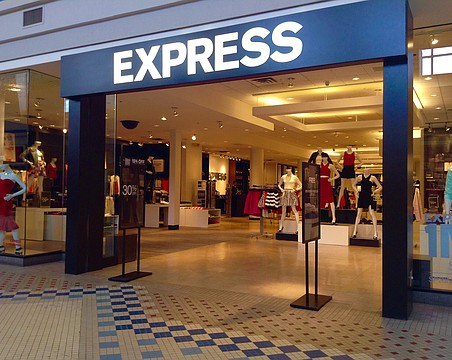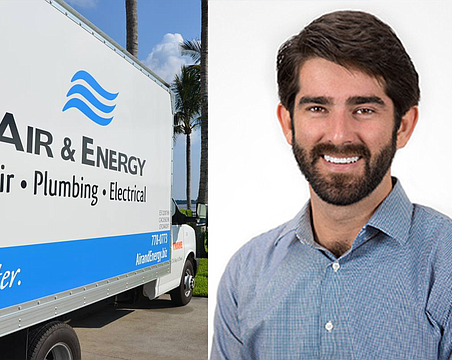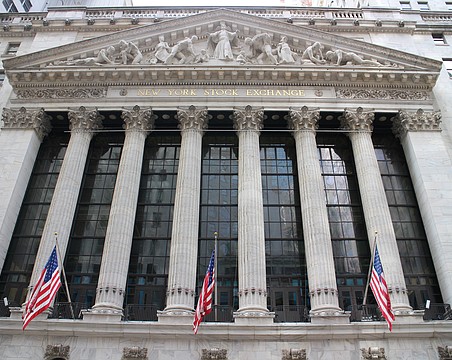Coastal Erosion?
By Francis X. Gilpin
Associate Editor
Coast Financial Holdings Inc.'s May 20 annual meeting was a little strange for a company that has been righting itself lately.
Shareholders of the Bradenton-based company had to journey all the way to Tampa if they wanted to hear executives brag about a first-ever annual profit in 2004 at their principal operating unit, 5-year-old Coast Bank of Florida.
While other community banks move annual meetings out of headquarters to a hotel, restaurant or resort, Coast chose a law office. The hospitality just wasn't the same.
A conference room at Carlton Fields PA offered no seating for visitors. The only chairs were around a conference table and were mostly filled by bank executives and directors.
Carlton Fields partner Richard A. Denmon told a Gulf Coast Business Review reporter that his firm was hosting the annual meeting in a boardroom because no shareholder had expressed an interest in attending. The main order of business was approval of a new stock option plan for employees.
When the reporter confessed to not owning Coast stock, Denmon suggested the scribe find something else to do. Coast President and Chief Executive Brian P. Peters promised to call the Review after the meeting. And he did.
Peters doesn't seem to be hiding anything, least of all his pride in Coast's 2004 showing.
The 42-year-old CEO took over last year after Coast founder Gerald L. Anthony was forced out following a 2003 loss of $1.6 million. The annual deficit was effectively $2.5 million for shareholders when the cost of converting a class of preferred stock was added.
"They were doing high-risk loans with high-cost deposits," says Peters. Anthony has since started a competing bank in Bradenton.
Coast common shares, initially sold to the public in November 2003, tumbled as low as $12.20 during the dark days of January 2004.
Since then, the price has steadily climbed, peaking four months ago at an adjusted $18.55 a share.
Investors evidently were impressed with how Peters and the bank's board of directors have begun to address the problems at Coast.
In 2003, Coast wrote off bad loans that equaled 0.68% of average outstanding loans, a high ratio compared to other community banks in the area. Last year, write-offs were only down to 0.60%. And Coast may not be out of the woods.
As of Dec. 31, the bank had 17 loans valued at $1.4 million that were past due by more than 90 days. That was fewer non-accural loans than a year earlier, but the bank's exposure was nearly $400,000 greater.
The bank nevertheless earned 22 cents a diluted share last year, compared to a 2003 loss of $1.46. But it may be risking that newfound profitability by making an audacious foray into Pinellas County.
Coast is in the process of opening four Pinellas offices. That includes assuming space in downtown St. Petersburg formerly occupied by Republic Bank, which was acquired by BB&T Corp. last year.
"We're no longer just a community bank," says Peters, a Seminole resident who used to be a Republic controller. "We've transformed into more of a regional bank."
Peters says the branch expansion isn't as costly as first appears.
Coast has its name emblazoned atop the 15-story building that used to be Republic's headquarters. But the lease - with rental payments of $1.1 million for approximately 5,900 square feet spread over 10 years - was quite favorable to the bank, says Peters.
The Coast CEO argues that it is currently cheaper to expand into Pinellas than it is to saturate the bank's Bradenton backyard.
The industry is consolidating faster in Pinellas. "There's a lot of turmoil up there right now because of all the banks that have been sold," says Peters.
Empty bank branches dot the Pinellas landscape and Peters says he is swooping in to remodel a few of them into Coast locations for a song.
Peters says he is getting one of his new Pinellas offices up and running for about $750,000. In Manatee County, with building new branches from scratch about the only option, $750,000 might cover land acquisition. Building costs are extra and permits take five months to procure, Peters adds.
James M. Schutz, a banking analyst with Sterne Agee & Leach Inc., endorses Peters' retrofitting of quarters abandoned by merged competitors. "There's no permits. There's no waiting," says Schutz. "All he has to do is open."
But doesn't built-out Pinellas look like a mature market, up against the booming population growth of Southwest Florida?
Peters says the high-rise development in downtown St. Petersburg, the residential teardowns in established neighborhoods, and the motel-to-condominium conversions on the beach leave Coast with plenty of lending opportunities. "And there's $18 billion in deposits," he says. "That's nothing to sneeze at."
Coast doesn't provide earnings guidance. But Peters will venture to say that the bank's net income will not decrease because total assets, $424 million on March 31, will grow at a healthy clip.
Schutz has no concerns that the aggressive branching will sap Coast's recent earning power. "Brian Peters has done a nice job since the credit blowup," says Schutz, who estimates Coast's 2005 net income will increase to 28 cents a diluted share and shoot up to 70 cents next year.
Sterne Agee, a Birmingham, Ala., money manager, makes a market in Coast stock.
A big Coast stockholder also isn't worried about the pace of expansion, which should give the bank an even dozen offices by the end of this year.
"It's basically a startup bank," says St. Denis J. "Sandy" Villere III, a partner with Villere & Co. in New Orleans. De novo banks are expected to lose money, but Villere was pleased with Coast's 2004 profit after four straight years in the red.
As of March 1, Villere's company owned almost 7% of the common stock, making it the third-biggest shareholder beyond New York investment firm Keefe Partners LP and Coast Chairman James K. Toomey.
"We feel it's in a good area. We bet on growth areas," says Villere. "If you have a well-run situation, someday somebody comes along and you get stock in a bigger bank, on a tax-free basis, and you've done well."
Peters says Coast won't be sold for a while. "If I was posturing the bank to sell it, I would be maximizing profitability," says Peters. "That's what banks are sold on. I wouldn't be doing all this expansion."
Coast's goal is to become a major banking presence in the Tampa Bay area, says Peters, "whether it takes five years or 15."
By then, Tampa could be a perfectly normal place to hold a Coast annual meeting.
Quarterly results (Coast Bank's corporate parent)
($s in 000s) March 31, 2005 Dec. 31, 2004 March 31, 2004
Total assets $423,699 $384,623 $303,734
Net interest income $2,971 $2,804 $2,298
Net income $77 $318 $9
Net charge-offs $221 $114 $280
Efficiency ratio 85.93% 79.51% 88.07%
Return on average assets 0.08% 0.34% 0.01%
Return on average equity 0.89% 3.66% 0.11%
Source: Coast Financial Holdings Inc.





